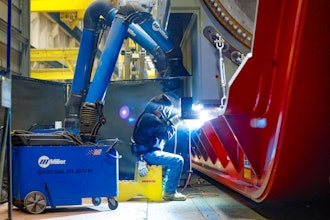Mitigate the risk
of allergens in
food production
and distribution
Food sector
whitepaper
For companies that manufacture and distribute
food products, the presence of allergens
in raw materials, ingredients, recipes, and
finished goods is a significant risk. Consumers
unknowingly exposed to allergens can become
very ill or lose their lives. Regulation and
business ethics compel food companies to track
and control the allergens throughout their
production and supply chain. In ColumbusFood
for Microsoft Dynamics NAV, we offer a solution
that includes a strong set of features to make
end-to-end allergen management reliable and
less onerous.
Mitigate the risk of
allergens in food
production and
distribution
The urgency of effective allergen
management
When it comes to allergen management, food
companies are accountable to four sets of
stakeholders with shared interests. Consumers
depend on them to safeguard their wellbeing
and help them avoid allergic reactions.
Regulators implement varying sets of mandates
to enforce stringent allergen management
across the industry.
Business interests demand the most effective
risk mitigation and consumer protection in
the most dependable, efficient, and economic
way. Companies purchasing from a producer or
distributor of food items also need to be assured
of effective allergen management by their
trading partner, or they increase their own risk
and liability.
Consumers count on you
If you have a food allergy or know someone who
does, you may have experienced firsthand how
dangerous it can be when the body’s immune
system responds to a substance in food as a
threat and musters its defenses. Currently,
there is neither cure nor treatment for food
allergies. You must avoid all foods that include
the triggering element.
Allergen avoidance requires careful navigation
by the people affected. Because many allergen-
inducing foods are commonly used in recipes
that determine the production of food products,
it is not always easy for persons with allergies to
make sure they stay away from them. They need
to rely on the manufacturers and distributors
to exercise uncompromising control over the
use and presence of allergens in their products
and facilities, and have confidence in their
ability to disclose it accurately and in a timely
manner. If food companies cannot make sure
of this, they could harm consumers or even
employees working in their own facilities or
those of a reseller or distributor. In addition, they
might expose their own business and that of
the hospitality, food service, and distribution
companies that resell, serve, or use their
products, to high risk.
Complexities of allergen regulation
Regulations define, but do not simplify allergen
management for food companies, especially
when they do business in multiple regions or
countries. For instance, governments in Europe
and the United States attempt to protect
consumers and industries from allergen-related
risks. Their approaches are similar, but not the
same. The U.S. Food and Drug Administration
identifies eight foods or ingredients which cause
close to 90 percent of the most dangerous food
allergy reactions: eggs, fish, crustacean shellfish,
milk, peanuts, tree nuts, soybeans, and wheat.
The European Union, on the other hand, names
14 allergens in a more comprehensive manner:
eggs, fish, celery, grains containing gluten, milk
and lactose, shellfish, mollusks, mustard, sesame
seed, soy, sulfite, lupine, peanuts, and nuts
such as macadamia, hazelnuts, walnuts, pecan,
and pistachios.
Many countries mandate that food companies
also disclose on their packaging and labels the
presence or likely presence of allergens—the
conditions typically expressed as “may contain”
or ”may have been exposed”—in their facilities,
equipment, or products.
In contrast, others mandate disclosure only
when allergens are unequivocally present
in their products, and pointing out ”may
contain” conditions is left to the discretion of
individual companies. In those situations, some
governments only provide high-level guidelines
to companies to alert consumers when products
may have been exposed to allergens in their
facilities or during the production process. It is up
to each company to be fully informed and current
regarding the regulatory mandates that apply in
the countries where they do business.
Need for comprehensive risk
management efforts
As you know, allergens do not change their
properties in any kind of processing or handling.
Therefore, if you manufacture, process, and
distribute food items, allergen management
needs to pervade all your business processes. It
needs to range from product research and recipe
planning, to purchasing, vendor management,
storage, and transportation, to production and
on to distribution, labeling, and the cleaning and
sanitation of your equipment and facilities. If it is
even remotely possible that a product includes
allergens, you must be able to make disclosure
and warn consumers.
A solution that enables
comprehensive allergen
management
ColumbusFood has the expertise to help you
comply with allergen-related regulations in
different countries. When we work with our
clients we make sure that allergen management
receives the right attention.
ColumbusFood includes a range of capabilities
that you can use to manage and control allergens
in your operation. Once you add allergen
information to any item, it remains trackable
through the mixing of recipes, the production of
finished products, and distribution and sales.
We have structured the solution’s allergen
management features to keep the process
reliable and simple—centralized, within a single
resource, and free from redundancies. You
don’t need to rely on systems or processes
outside of ERP to manage allergens in your
processes. The allergen management
capabilities in ColumbusFood are part of the
standard solution, not a module that you need to
acquire separately.
Creating an allergen management plan
Before you take any measures to document and
manage allergens and allergen exposure in your
operation, it would be helpful to take a complete
inventory of the possibilities of allergen
contamination in your processes business-
wide. Specify each instance of possible allergen
exposure with its likely consequences, including
financial impacts and penalties. That will help
you make a strong business case for using
technology and implementing process changes
to address your own and your distributors’ and
customers’ allergen-related risks.
Pervasive information and consistent
allergen management process
When materials and items become recipe
ingredients, the allergen and ”may contain”
information pervades, and it remains intact
and specific when the production output
from recipes becomes a sold item or is used in
another recipe. By the solution’s logic, there
cannot be more allergens linked to a finished or
intermediate product than were originally linked
to the ingredients. The final or intermediate
production output may be tagged with multiple
allergen linkages because of its ingredients.
Thus, if you provide and record correct, complete
allergen-related data early in your process, it
remains so until products leave your operation.
Shifting the perspective to specific allergens, in
the new release of ColumbusFood you can also
choose an allergen or the ”may contain” or ”may
have been exposed” information to establish a
complete list of all items, ingredients, recipes,
and products that do contain that allergen or
that might contain or might have been exposed
to allergens.
In many food production and distribution
operations, process gaps in allergen
management present additional risks for
companies and eventual consumers. You
will want to structure your processes in such
a way that you can prevent the addition of
allergenic items to recipes and production runs
by production teams. ColumbusFood provides
a warning when a user adds an allergen-linked
item at the production stage.
Extending allergen management and risk
mitigation through your entire operation
ColumbusFood also enables users’ allergen
awareness when items are ordered, sold,
purchased, or transferred. A fact box linked to an
item’s document line highlights the fact that an
item contains or may contain allergens, and links
to all allergen related data available in the system
for that item. Users can then take the right steps
to manage these items in the company’s bills-of-
material and processes. Similarly, in the actual
BOMs, the formula, item process, co-product or
by-product, and package pages draw attention
to allergen information by means of differently
colored lines and fact boxes at both the BOM and
BOM version levels.
Allergen-controlled production planning
In production planning, ColumbusFood provides
allergen visibility in various processes and
events. In batch planning, for instance, when
many different combinations of allergens can
occur in various items, you can sort items based
on the presence or absence of allergens. What’s
more, you can review the dates and equipment
when and where items containing the same set
of allergens are produced. Both the item and
the order detail sections of the batch planning
worksheet bring attention to the presence of
allergens by means of a fact box alert much like
what you see, for example, in order entry.
New allergen-cleanse, non-
production event
You already had the ability to schedule non-
production events and sequence them along
with production orders to allow enough time for
equipment cleaning between production runs.
In the new version of ColumbusFood, you also
can choose a non-production event of the type
allergen cleanse to bring greater transparency to
allergen control.
Ensuring the right employee allergen
management actions
The solution’s workflow function includes a
pre-built call-to-action workflow that you can
use to ensure users responsible for allergen
management and control take all the right steps.
This functionality can be extremely valuable
when there are changes to the allergens
connected to ingredients or present in formulae.
Employees need to be aware of such changes
and should have a way to review and amend
the processes to do with the items concerned.
They may, for example, want to update labels.
The workflow function helps you ensure that no
damaging process gaps occur.
When, during production, the process consumes
items that are not part of the BOM that defines
the output, the allergen awareness built
into BOM lines cannot effectively apply. Your
production may then include allergens that are
not found in typical iterations of the output
item. To draw attention to this risk factor and
enable workers to take appropriate next steps,
ColumbusFood provides a warning in that event.
Current capabilities to support
allergen management
Even before you upgrade to the newest release
of ColumbusFood, you can use several features
in the solution’s current version to manage
important aspects of allergen control and
reporting. Here is a brief overview:
Use vendor certification to track which
suppliers have an allergen control plan.
Assign bins to specific items, and use putaway
logic to ensure that allergenic items are properly
isolated in your warehouse, so they cannot
contaminate other stored items, for example, by
means of dust
Assign warehouse class codes to items, as
well as to zones and bins, to ensure items are
placed only in bins with a matching warehouse
class code.
Item attributes can provide visibility of the
presence of allergens during production
planning. Note, however, the limitations in using
this feature: You can only associate a single
value to an item, whereas when you deal with
allergens you usually need to be able to connect
multiple allergens with an item.
Plan non-production events and sequence
them along with production orders to
allow for adequate clean-up time between
production runs.
Lot tracing of raw materials, intermediates, and
finished items lets you trace lots from receipt to
final disposition.
Process data collection can help enforce
that labels are inspected when ingredients
are received.
You can design and print labels to properly
identify allergens.
Next steps
To learn more about how Columbus can
help you with allergen management, see
a demo, or have your questions answered,
contact your local Columbus office.
www.columbusglobal.com
At Columbus, we are committed to enabling comprehensive, dependable
allergen management for companies that make and market food products.
While large enterprises typically have the resources and budgets to implement
comprehensive allergen management efforts, it can be more challenging for
smaller, growing companies to keep up with regulations and realize effective
allergen management. In ColumbusFood, we offer a solution that can help you
control allergens and manage your industry-specific processes and activities
within a highly usable, manageable, unified ERP environment. We are
also ready to share our expertise with food companies and our implementing
technology partners.
Mitigate the Risk of Allergens in Food Production and Distribution
Business interests demand the most effective risk mitigation and consumer protection in the most dependable, efficient, and economic way. Regulations define, but do not simplify allergen management for food companies, especially when they do business in multiple regions or countries. Read our whitepaper on mitigating these and other risks allergens in food production and distribution.
Latest in Home





















